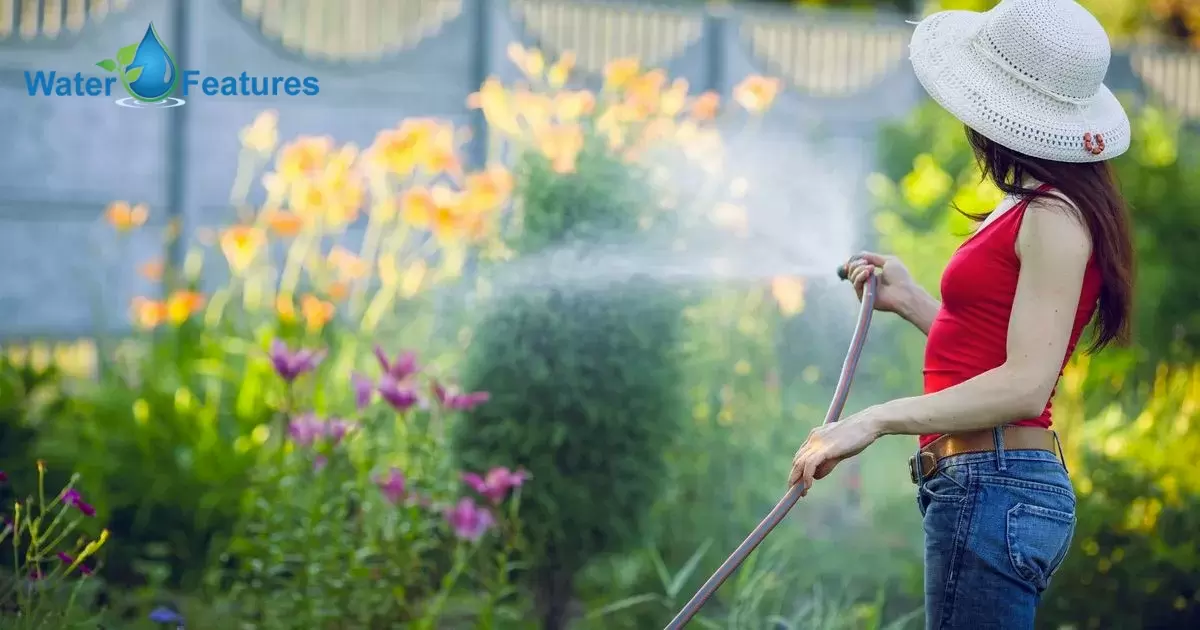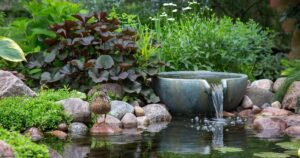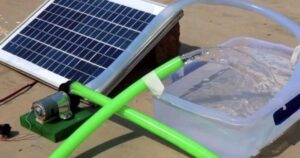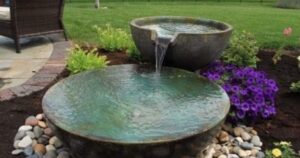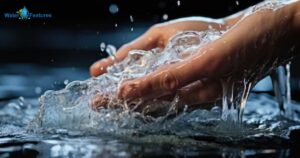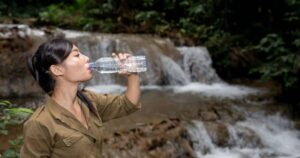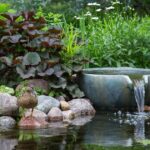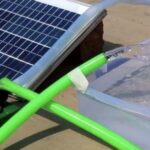Gardening is a fulfilling endeavor that allows you to cultivate beautiful plants and enjoy the tranquility of your outdoor space. Not everyone has the luxury of an outside tap for convenient garden watering. Whether your garden is remote, lacks a hose, or is situated far from a water source, there are effective alternatives to ensure your garden thrives. In this comprehensive guide, we’ll explore various methods and solutions for watering your garden without an outside tap, from traditional tools like watering cans to modern systems such as drip irrigation and rain barrels.
Having an outside tap makes garden watering a breeze, as you can easily connect a hose and reach all corners of your garden. If you lack this infrastructure and are wondering How To Water a Garden Without an Outside Tap? you might face the challenge of carrying heavy buckets of water back and forth. It can be time-consuming, physically demanding, and not the most efficient method, especially for larger gardens. Finding alternatives to make the task more manageable is essential.
One of the most efficient ways to water your garden without an outside tap is by using a water storage system, such as rain barrels. These barrels collect rainwater, which you can then use to irrigate your plants. Consider investing in a long garden hose or a soaker hose that can reach every corner of your garden, allowing you to distribute the water evenly.
How to Get Water to a Remote Garden
The Remote Garden Challenge: If your garden is located far from your home or water source, the logistics of providing it with adequate hydration can be daunting. Carrying buckets of free water different from tap water over a long distance can be physically demanding and time-consuming. Here are some strategies to overcome this challenge.
- Rainwater Collection: Consider setting up a rainwater harvesting system in your garden. This involves collecting rainwater in barrels or tanks during rainy periods and using it to irrigate your plants during dry spells.
- Solar-Powered Pump: Invest in a solar-powered water pump that can transport water from a remote source to your garden. These pumps harness solar energy to move water efficiently.
- Garden Hose Extension: Use garden hose extensions to bridge the gap between your outdoor tap and the remote garden. You can connect multiple hoses to reach distant areas.
How to Properly Water Your Garden Without a Hose
Hoseless Watering Methods: Not having a hose doesn’t mean you can’t keep your garden lush and healthy. Here are some effective techniques.
- Watering Cans: Traditional watering cans are an excellent choice for small to medium-sized gardens. They allow for precise watering and are easy to use.
- DIY Watering Cans: In a pinch, you can craft your own watering can by puncturing holes in the lid of a plastic container. Fill it with water and use it for controlled watering.
- Drip Irrigation System: A drip irrigation system is a practical solution for larger gardens. It delivers water directly to the base of plants through a network of tubes and emitters, ensuring efficient and consistent hydration.
Easy Ways to Water a Garden
Simple and Efficient Solutions: There are several uncomplicated methods that make garden watering a breeze.
| Watering Method | Suitable for | Benefits | Considerations |
| Rain Barrel | All garden sizes | Eco-friendly, chemical-free water source | Proper installation and maintenance are essential. |
| Bottle Watering System | Small to medium gardens | Consistent moisture, water conservation | Regularly refill and monitor bottle water levels. |
| Self-Watering Planters | Container gardening | Low maintenance, ideal for busy gardeners | Choose high-quality self-watering planters. |
| Watering Cans | Small to medium gardens | Precise watering control | May require multiple trips for larger gardens. |
| DIY Watering Cans | Small gardens | Low-cost, makeshift watering solution | Not as durable as traditional watering cans. |
| Drip Irrigation System | Large gardens | Efficient and automated watering | Initial setup and maintenance are necessary. |
How to Get Water to a Garden with No Water Source
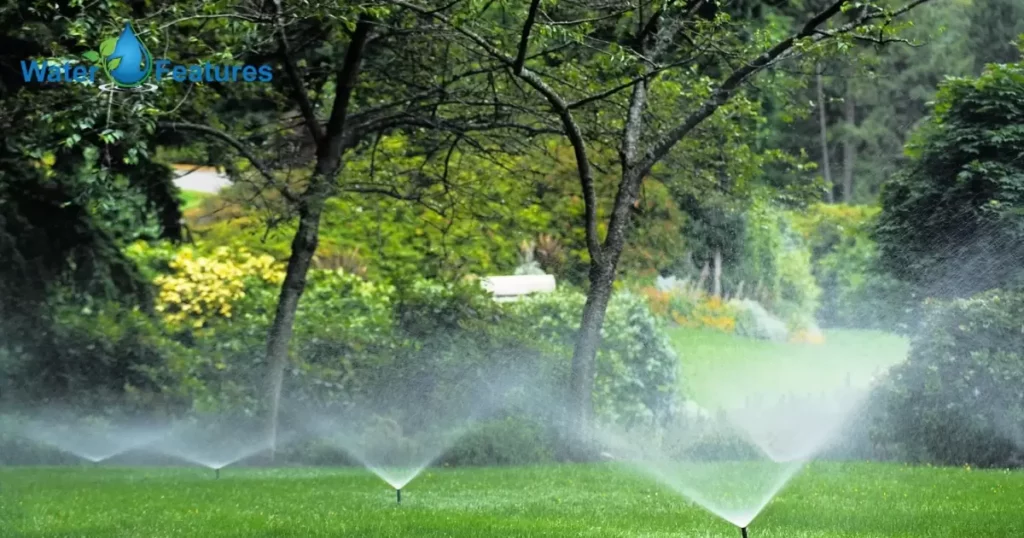
Dealing with a Waterless Garden: If your garden is situated in an area without access to a water source, you’ll need to be creative and resourceful.
- Water Tank or Truck: If your garden is entirely waterless, you may need to have water delivered by a water tank or truck. This is a suitable solution for large-scale projects.
- Borrow Water: If you have accommodating neighbors with water access, you can ask to borrow water from them. Offer to compensate or trade services to make it a mutually beneficial arrangement.
- Explore Borehole Drilling: In some cases, drilling a borehole or well might be a long-term solution. While it’s a costly endeavor, it can provide a consistent water source for your garden.
Watering Plants Far from a Spigot
Reaching Distant Areas: When your garden is far from a spigot, it’s important to have a plan in place to effectively deliver water to all areas.
- Hose Extensions: Using hose extensions, you can cover a larger area of your garden. Make sure to choose high-quality hoses to avoid leaks and damage.
- Moveable Water Containers: Utilize large containers on wheels to transport water to different parts of your garden. This approach saves time and effort.
- Strategic Planting: Consider grouping plants with similar water requirements together. This reduces the need to water every part of your garden equally, as some areas may naturally retain moisture better than others.
How to Water Plants Without Irrigation
Irrigation-Free Watering: While traditional irrigation systems can be efficient, there are alternatives if you prefer not to use them.
- Mulch: Apply a layer of mulch around your plants. Mulch helps retain soil moisture, reducing the need for frequent watering.
- Hand Watering: For small gardens, hand watering can be a meditative and effective way to ensure your plants receive the care and attention they need.
- Soil Preparation: Improve your garden’s soil quality to enhance its water retention capacity. Amending the soil with organic matter can help it retain moisture for longer.
Ways to Water a Garden Without Using a Hose
Hose-Free Garden Watering Techniques: Hoses are a convenient tool, but they’re not the only way to hydrate your garden effectively.
- Watering Cans: The classic watering can remains a popular choice for its precision in delivering water directly to plant roots.
- DIY Watering Cans: If you don’t have a watering can, a simple DIY solution is to repurpose a plastic container by poking holes in the lid. Fill it with water and let it work as a makeshift watering can.
- Drip Irrigation System: For more automated and extensive watering, a drip irrigation system is a reliable option, as it delivers water directly to the roots of your plants.
Watering Cans
Time-Tested Garden Tool, Watering cans are a time-tested and versatile tool for gardeners.
- Benefits: They provide precise control over where the water goes, minimizing wastage. They’re especially useful for smaller gardens, container plants, and delicate flowers.
- Considerations: Choose a watering can with a comfortable handle and a removable rose (the nozzle with small holes). The rose allows for a gentle, even water distribution.
DIY Watering Cans
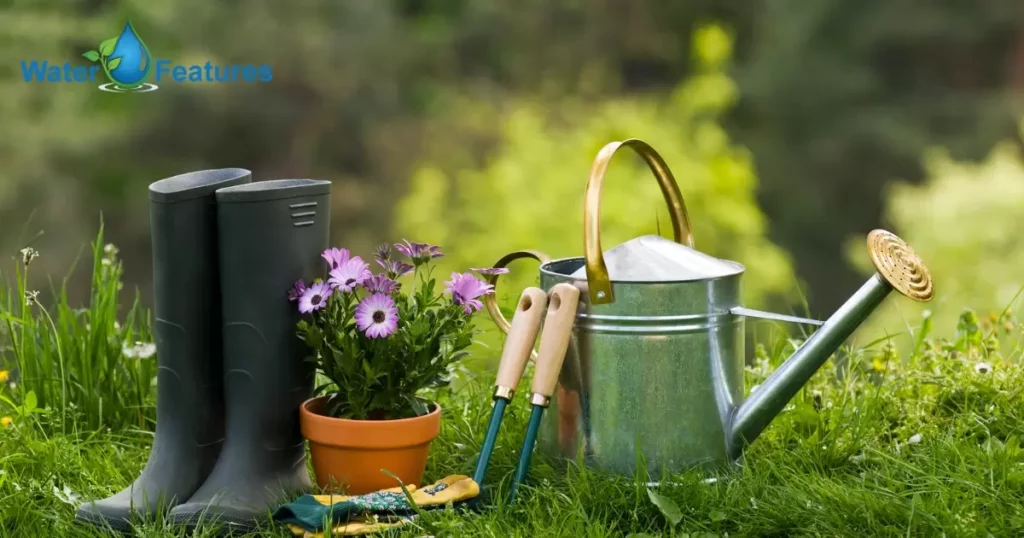
Homemade Watering Can Alternative: In situations where you don’t have access to a watering can, creating a DIY version can save the day.
- Materials Needed: A plastic container with a lid, a nail or awl, and a handle (an old broom handle or a sturdy stick).
- Steps: Poke several small holes in the lid of the container. Attach the handle to the container’s sides or the lid. Fill the container with water, and you have a homemade watering can.
Drip Irrigation System
Efficient and Automated Watering: A drip irrigation system is a smart choice for gardens of all sizes, from small to large.
- How It Works: The system uses a network of tubes and emitters to deliver water directly to the base of each plant. This ensures efficient hydration with minimal water wastage.
- Benefits: Drip irrigation systems save time, reduce water usage, and can be customized to suit the specific needs of your garden.
Rain Barrel
Harvesting Rainwater for Your Garden: A rain barrel is an eco-friendly way to store rainwater for your garden’s use.
- Installation: Place the rain barrel under a downspout to collect rainwater during showers. Ensure it has a secure lid to prevent debris and pests from contaminating the water.
- Usage: Connect a hose to the barrel’s tap and use it to water your garden. Rainwater is chemical-free and an excellent source of hydration for your plants.
Bottle Watering System
Repurposing Plastic Bottles: A bottle watering system is a simple but effective solution for keeping your plants well-hydrated.
- How It Works: Fill empty plastic bottles with water and insert them upside down into the soil near your plants. As the soil dries out, the bottles release water slowly, providing a consistent source of moisture.
- Benefits: This method conserves water and ensures your plants receive a steady supply of hydration, especially during hot and dry periods.
Self-Watering Planters
Smart Planters for Effortless Gardening: Self-watering planters are a convenient option for container gardening.
- How They Work: These planters have a built-in reservoir that holds excess water. Plants draw water from the reservoir as needed, reducing the frequency of manual watering.
- Benefits: Self-watering planters, a convenient solution to Water a Garden Without an Outside Tap? are low-maintenance and ideal for busy gardeners or those who may be away from home for extended periods
Frequently Asked Questions
Are there any plants that require less water, making it easier to maintain a garden without an outside tap?
Yes, many drought-resistant plants, such as succulents, lavender, and rosemary, require less water. Choosing these plants can significantly reduce your garden’s water needs.
Can I use greywater to water my garden without an outside tap?
Yes, greywater (used household water from sources like showers, sinks, and washing machines) can be used to water your garden. Be sure to use biodegradable, low-sodium, and low-phosphorus soaps for greywater.
What is the best time of day to water a garden without an outside tap?
Early morning is typically the best time to water your garden as it allows the soil to absorb moisture before the heat of the day. Avoid watering during the hottest part of the day to prevent water loss through evaporation.
Conclusion
Maintaining a thriving garden without an outside tap is indeed possible, thanks to a variety of creative and practical solutions. Whether you’re dealing with a remote garden, a lack of hose access, or a garden far from a water source, the methods covered in this guide can help you provide the necessary hydration to your plants.
From traditional watering cans to innovative drip irrigation systems and eco-friendly rain barrels, there’s a solution to fit your garden’s unique needs. So, don’t let the absence of an outside tap discourage you from nurturing your green oasis explore these alternatives and watch your garden flourish.
By using rain barrels, hoses, watering cans, and strategic planting, you can maintain a lush and beautiful garden, even without the convenience of an outside tap. These methods not only help you save time and effort but also promote water conservation, making your garden eco-friendly and sustainable.
